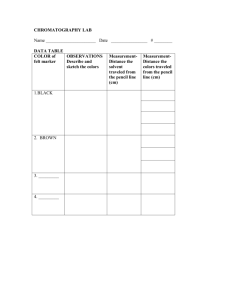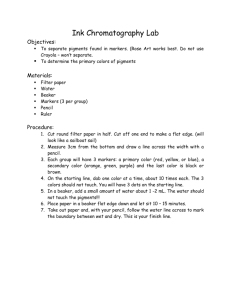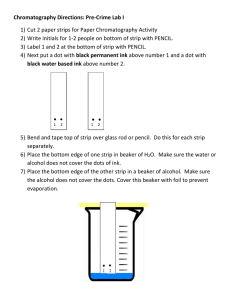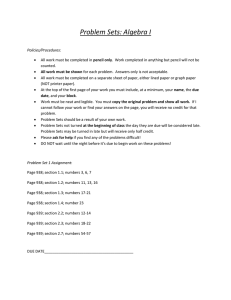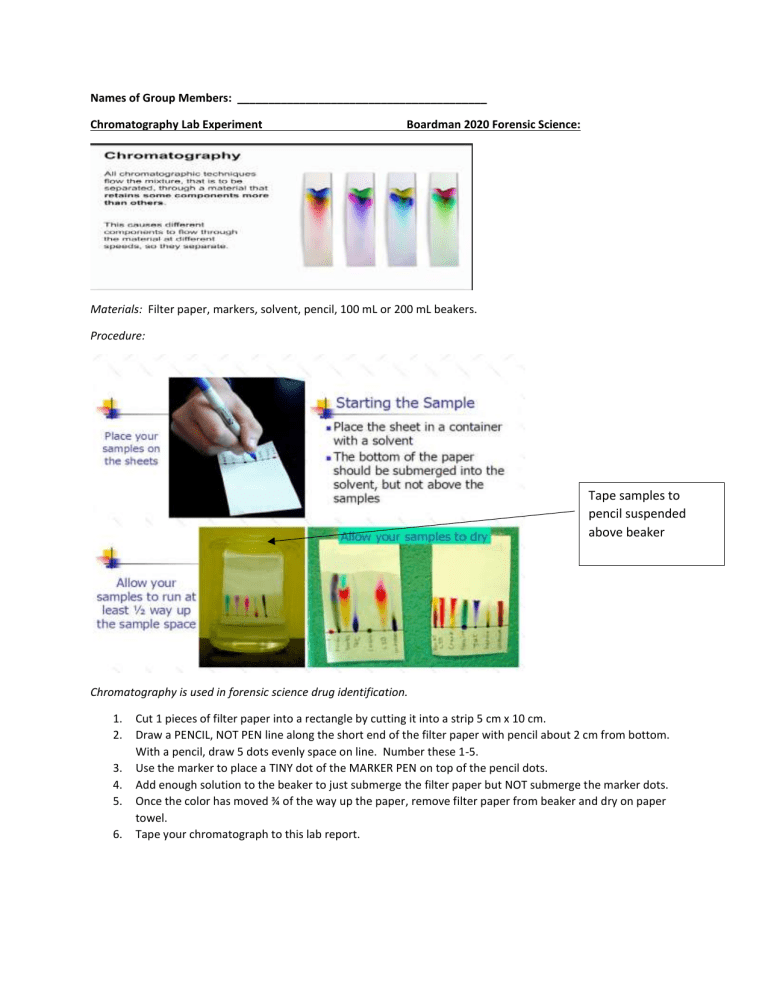
Names of Group Members: ________________________________________ Chromatography Lab Experiment Boardman 2020 Forensic Science: Materials: Filter paper, markers, solvent, pencil, 100 mL or 200 mL beakers. Procedure: Tape samples to pencil suspended above beaker Chromatography is used in forensic science drug identification. 1. 2. 3. 4. 5. 6. Cut 1 pieces of filter paper into a rectangle by cutting it into a strip 5 cm x 10 cm. Draw a PENCIL, NOT PEN line along the short end of the filter paper with pencil about 2 cm from bottom. With a pencil, draw 5 dots evenly space on line. Number these 1-5. Use the marker to place a TINY dot of the MARKER PEN on top of the pencil dots. Add enough solution to the beaker to just submerge the filter paper but NOT submerge the marker dots. Once the color has moved ¾ of the way up the paper, remove filter paper from beaker and dry on paper towel. Tape your chromatograph to this lab report. Separated Colors Marker Color 1: 2: 3: 4: 5: Analysis: 1. 2. 3. 4. 5. 6. 7. 8. 9. Fill in data table describing the substances tested and the colors each separated into. On Saferstein, Forensic Science, p.219, the textbook shows a figure of a sample being tested alongside standards. What drugs are being tested? What type of chromatography is this called? (textbook). What is the “action” that causes the liquid to rise up the paper? Chromatography is a separation process. Is this separation a physical or chemical change? What other drug is tested on p.221. What other type(s) of chromatography is/are used by forensic chemists? Briefly describe the process in two sentences. Tape the filter paper below.
